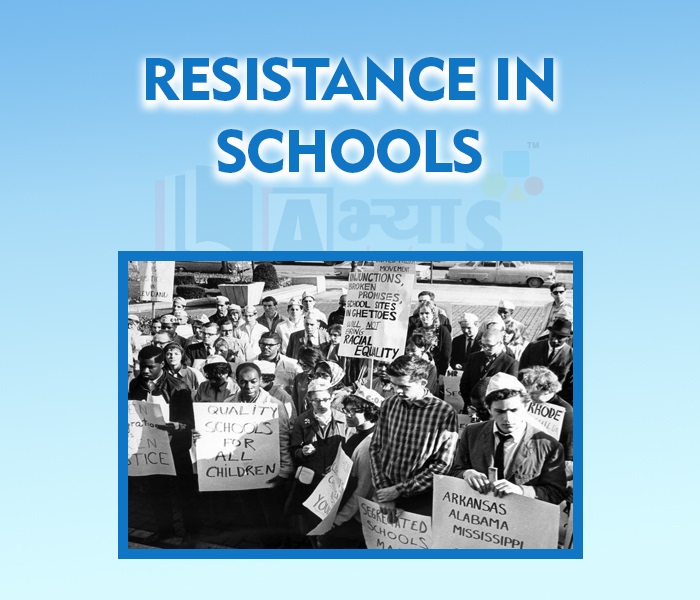Resistance in Schools













Resistance in Schools
Resistance in Schools: Teachers and students of Vietnam did not blindly follow the French dictates. Teachers sometimes modified the text and criticised what was stated. There was open opposition and on the other hand, there was also a silent resistance.
Students Agitation: An incident of Saigon Native Girls School in 1926, created much agitation amongst the Vietnamese. A Vietnamese student sitting in one of the front seats was asked to vacate it for her fellow French student. But as the girl refused to do so, the principal expelled her. When other angry students protested, they too were expelled. This incident led to a further spread of agitation and protests among students. Seeing the situation getting out of control, the government ordered the school authority to take all the students back. This incident hurt the nationalist feelings of the Vietnamese.
Students’ Reaction to Colonial Policies: Students’ agitation brought, them into conflict with the French as well as the traditional elite, Students fought against the colonial government’s efforts to prevent the Vietnamese from qualifying for white-collar jobs. By the l920s, students were forming various political parties, like, Young Annan and publishing nationalist journals like the Annanese Student. Schools thus became an important place for political and cultural battles. The French tried to strengthen their rule in Vietnam through the control of education. They tried to change the values, norms and perceptions of the people to make them believe in the superiority of French civilisation and the inferiority of the Vietnamese. The battle against French colonial education became the part of the larger battle against colonialism and for independence
Students / Parents Reviews [10]
It was a good experience with Abhyas Academy. I even faced problems in starting but slowly and steadily overcomed. Especially reasoning classes helped me a lot.

Cheshta
10thI have spent a wonderful time in Abhyas academy. It has made my reasoning more apt, English more stronger and Maths an interesting subject for me. It has given me a habbit of self studying

Yatharthi Sharma
10thMy experience was very good with Abhyas academy. I am studying here from 6th class and I am satisfied by its results in my life. I improved a lot here ahead of school syllabus.

Ayan Ghosh
8thAbhyas is a complete education Institute. Here extreme care is taken by teacher with the help of regular exam. Extra classes also conducted by the institute, if the student is weak.

Om Umang
10thMy experience with Abhyas is very good. I have learnt many things here like vedic maths and reasoning also. Teachers here first take our doubts and then there are assignments to verify our weak points.

Shivam Rana
7thIt has a great methodology. Students here can get analysis to their test quickly.We can learn easily through PPTs and the testing methods are good. We know that where we have to practice

Barkha Arora
10thOne of the best institutes to develope a child interest in studies.Provides SST and English knowledge also unlike other institutes. Teachers are co operative and friendly online tests andPPT develope practical knowledge also.

Aman Kumar Shrivastava
10thA marvelous experience with Abhyas. I am glad to share that my ward has achieved more than enough at the Ambala ABHYAS centre. Years have passed on and more and more he has gained. May the centre flourish and develop day by day by the grace of God.

Archit Segal
7thBeing a parent, I saw my daughter improvement in her studies by seeing a good result in all day to day compititive exam TMO, NSO, IEO etc and as well as studies. I have got a fruitful result from my daughter.

Prisha Gupta
8thAbout Abhyas metholodology the teachers are very nice and hardworking toward students.The Centre Head Mrs Anu Sethi is also a brilliant teacher.Abhyas has taught me how to overcome problems and has always taken my doubts and suppoeted me.
